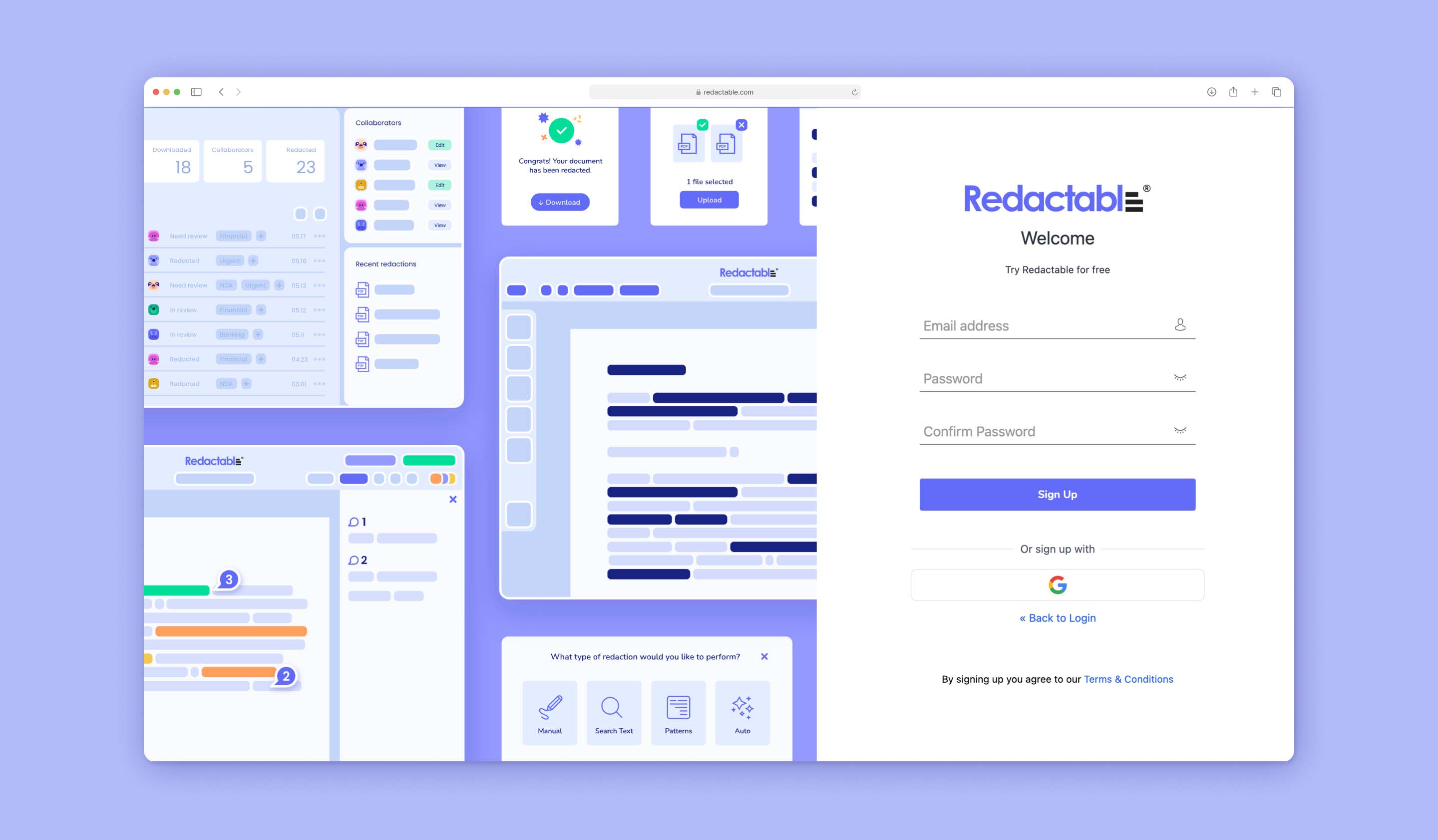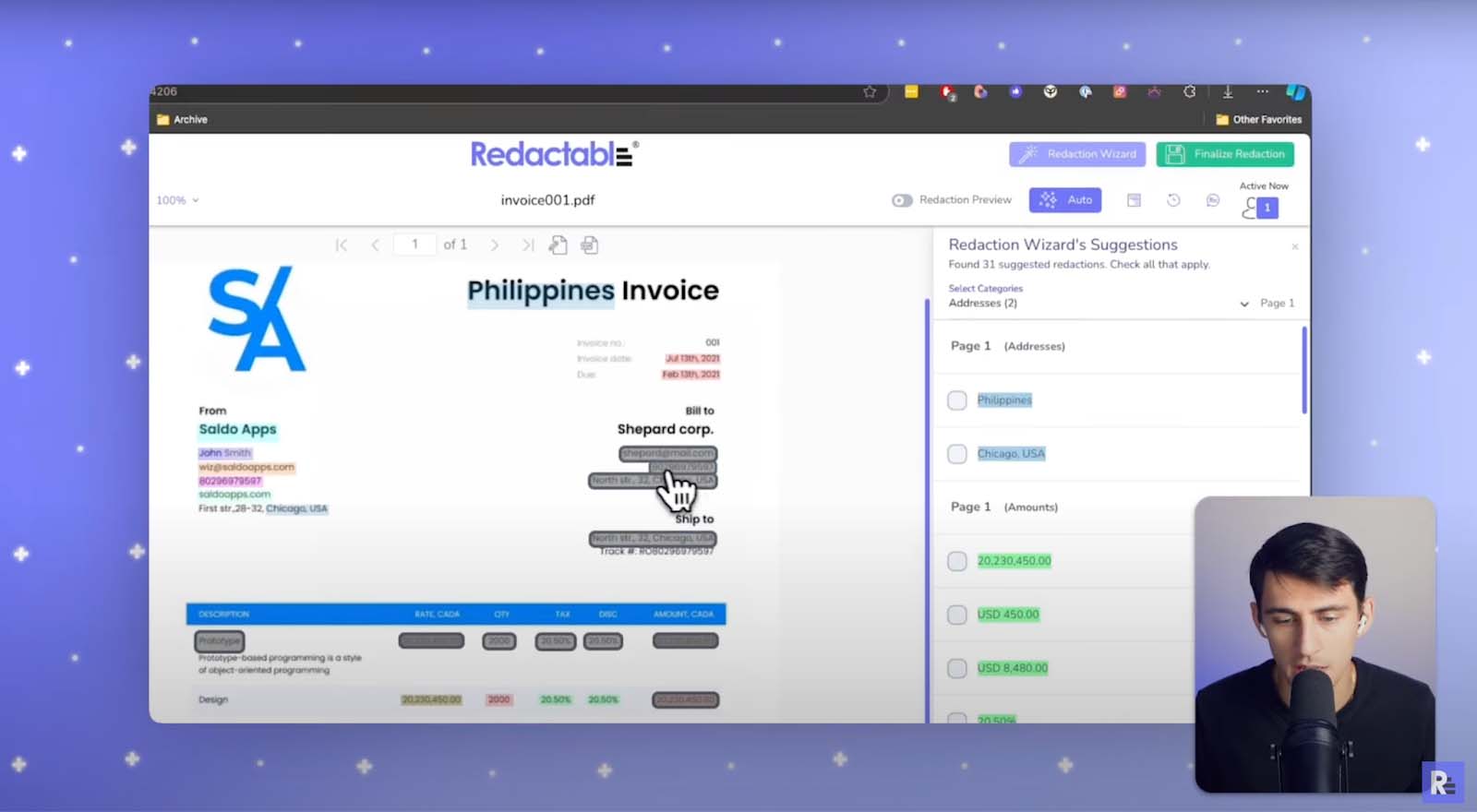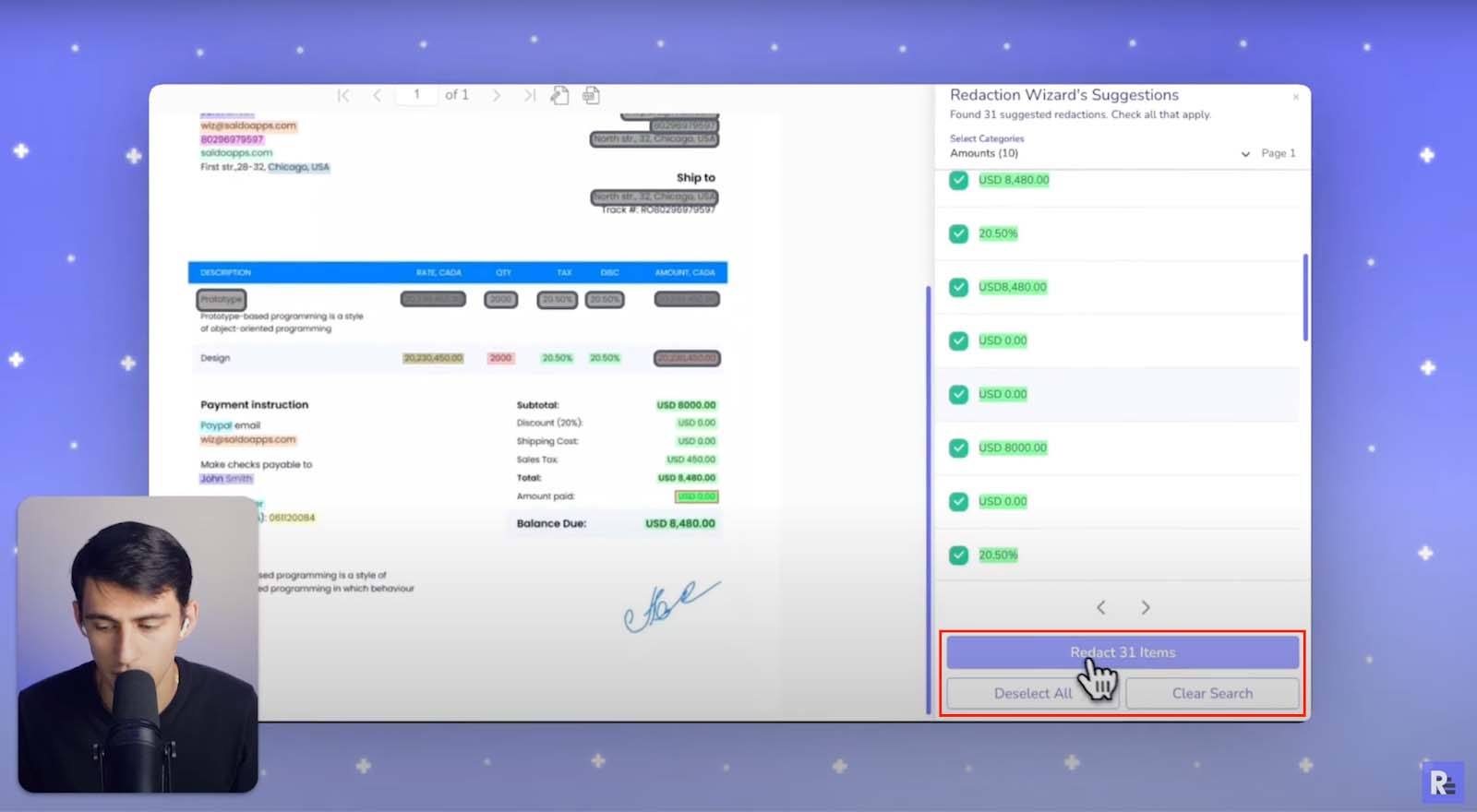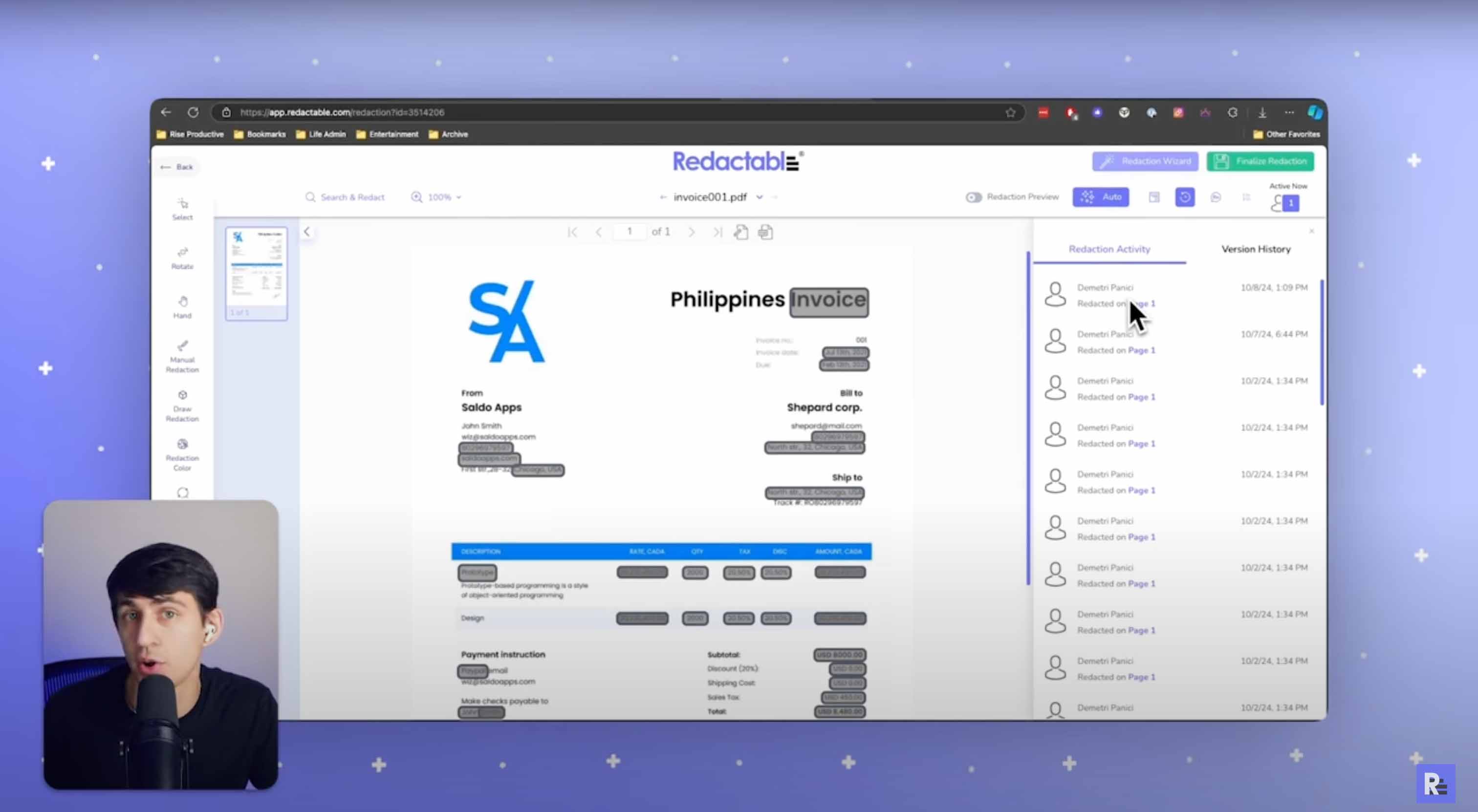AI-powered redaction is transforming how organizations protect sensitive information, moving far beyond traditional black markers and manual PDF editing. From automated PII detection to one-click bulk redaction, Redactable's latest features are helping legal teams, government agencies, and healthcare providers save 98% of their document processing time.
Whether you're handling client documents, employee records, or confidential reports, these new automation capabilities ensure permanent protection of sensitive data while streamlining your entire workflow. Let's explore the game-changing features that are revolutionizing document security in 2025.
What is redaction and why is it important?
Redacting a document means deleting sensitive information before sharing or publishing it. Traditionally, people used markers to blackout text in PDFs, but modern AI-powered solutions now provide more accurate and secure ways to perform this task, ensuring that sensitive data is permanently removed.
During document sharing, redaction is essential to prevent unauthorized access and mismanagement of critical data. For instance, did you know that almost 250,000 cases of identity theft were reported in the US within the 4th quarter of 2023 alone?
But why is it so important to learn how to redact PDF?
- Protects your privacy: Redacting your PDFs will help you safeguard sensitive details, like your personally identifiable information (PII), and protect your privacy even while sharing documents with third parties.
- Supports transparency without risk: By leveraging an effective redaction solution, you can still share accurate versions of required documents without exposing yourself to unnecessary risks.
- Ensures compliance with data management laws: Redaction helps businesses protect their customers’ information and comply with industry laws and regulations, such as the General Data Protection Regulation (GDPR).
- Redacting documents helps businesses avoid costly lawsuits: Redacting your business documents helps you protect customer information and prevent lawsuits that may arise if customer details fall into the wrong hands.
Remember, redaction is not just another task you need to do. Instead, it provides a cornerstone for ensuring your privacy protection and data security. That said, let us explore how to remove text from PDF.
How to use Redactable to remove sensitive data in a PDF
Using Redactable to safeguard your sensitive information is quick and easy. In this section, we’ll walk you through how to redact in PDF with our solution, offering a seamless, AI-powered experience that ensures complete data protection while maintaining workflow efficiency.
But first, the 6-step guide to redacting with Redactable.
Browser access
You don’t need to download any third-party app or plugins to use Redactable. All you need to is to log into your Redactable account via any browse on your Windows, Mac, or Linux OS computer, and you’re good to go!
- Log in to your account on the Redactable web app.

- Upload your PDF from your device or preferred cloud storage.

- Choose between “Manual”, “Search and Select,” “Categories,” or “One-Click Auto-Redaction” to instruct the AI redaction wizard on what to identify throughout your document.
Redaction wizard suggestions
One of the best things about using Redactable is its AI-powered Redaction Wizard, with "Auto" being the most frequently used mode. This intelligent feature automatically scans your documents for many types of potentially sensitive information—from personal identifiers to financial data.. This way, you don’t have to manually comb through your document and risk omitting some vital information.
Based on these suggestions, you can then choose which fields you want to redact or click “Select All” to redact all the suggested information automatically.

- You can also pick the specific details you want to redact from the wizard’s suggestions by checking the relevant boxes.
Operational freedom
In addition to highlighting private information in your document and suggesting it for redaction, Redactable also gives you the freedom to do it manually. You can search for specific keywords in your document to redact them, and even create redaction templates that are tailor-made for your business needs.

- Select “Redact” to completely remove all the sensitive data from your document.

- Preview and download your fully redacted document
Version history
Do you need to come back to your documents to add or remove redactions? No problem. Redactable keeps a version history for every document you redact on the portal, allowing you to hit ‘Restore’ and get back to the version you need. The software shows you what was redacted, who redacted it, what page was redacted, and when while allowing seamless edits or updates whenever you need them.

And that’s all. You can move on to the next document!
Why choose redactable?
Unlike PDF editors that simply overlay black boxes, Redactable permanently removes sensitive information from documents. This irreversible process ensures compliance with data privacy regulations and prevents unauthorized access to redacted text, guaranteeing that once the document is redacted, the information is securely gone. But don’t just take our word for it.
Here are some of the standout features that make Redactable so great.
- Browser-based accessibilityAccess Redactable instantly from any modern browser—no downloads or installations needed. Start protecting sensitive documents right away, whether you're at the office or working remotely.
- AI-powered automationAdvanced AI technology automatically identifies and secures sensitive information, delivering 98% time savings compared to manual redaction methods. The system intelligently detects patterns across multiple document types, ensuring consistent protection.
- Permanent data removalUnlike PDF editors that simply overlay black boxes, Redactable permanently removes sensitive information from documents. This irreversible process ensures compliance with data privacy regulations and prevents unauthorized access to redacted content.
- Invisible data redactionRedactable goes beyond visible content, thoroughly removing hidden data and metadata from your documents. This comprehensive approach eliminates the risk of accidental data exposure through document properties, hidden or transparent objects, comments, data residing outside of visible layout, or embedded information.
- Audit-ready certificationEvery redaction generates a detailed certificate documenting the entire process. These certificates provide a clear audit trail for compliance requirements, detailing what information was removed and when.
- Seamless cloud integrationConnect directly with cloud services like Dropbox and OneDrive for streamlined document management. This integration enables efficient team collaboration while maintaining security throughout the redaction workflow.
- Advanced OCR capabilitiesTransform scanned documents into redaction-ready files with Optical Character Recognition technology. This feature ensures consistent protection across all document types, including scanned papers and image-based PDFs.
Take the next step
Whether you’re an individual protecting personal data or a business handling confidential documents, safeguarding your sensitive information has never been more crucial. And considering the current rise in privacy violations and identity breaches, knowing how to redact PDFs is a great way to stay ahead of many security complications.
With Redactable, you can perform your redactions quickly and securely, with the assurance that your private information will stay protected.
Try Redactable’s advanced AI-powered redaction for yourself. Create your account and get started today!







